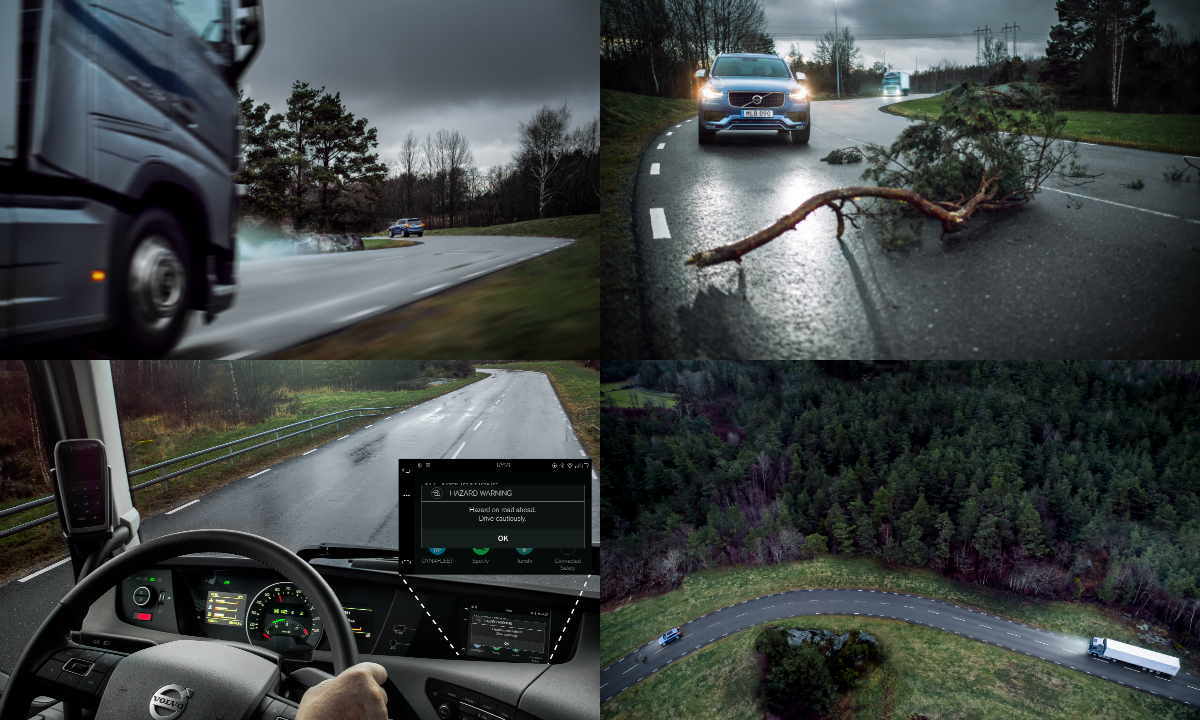
Thanks to pioneering collaboration, two independent vehicle manufacturers are allowing their cars and trucks to share real-time traffic hazard information. The passenger-car version of Connected Safety was launched by Volvo Cars in 2016. With Volvo Trucks now rolling out its version of the service, trucks and cars are able to alert each other to potential hazards. This is possible because the two companies share safety-related data between their respective clouds.
Connected Safety was developed to send out alerts to nearby vehicles connected to the service whenever a driver activates the vehicle’s hazard warning lights. In the longer term, the cloud-based service can be expanded with additional safety-enhancing functions.
Volvo Trucks will initially introduce Connected Safety on new trucks in Sweden and Norway, where both Volvo Trucks and Volvo Cars account for a significant proportion of annual new-vehicle registrations.
Here’s how Connected Safety works… When the hazard warning lights are switched on, the truck sends a signal via the driver’s Internet-connected mobile phone to Volvo Trucks’ cloud service. From there the information is forwarded to the corresponding service at Volvo Cars. An alert is then transmitted to all connected cars and trucks approaching the location of the vehicle whose hazard lights have been activated.
The system will be available in Sweden and Norway during 2018. Connected Safety is applicable to Volvo Trucks’ FH16, FH, FM and FMX models equipped with the truck-maker’s integrated system for services and infotainment, depending on the lorry’s specification and choice of services. Volvo Cars offers Connected Safety with XC60, XC90, XC40, S90, V60 and V90 models. 
The 5 automotive cloud services which will become standard in connected cars, according to Bosch.
Check out the first all-electric Volvo truck to enter commercial service.












